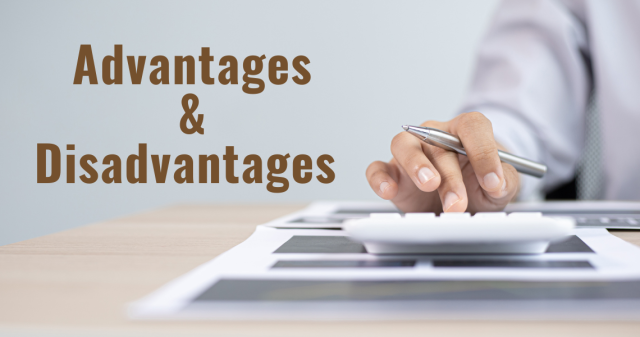




Book a Free Consultation!
✅Builders CFO Program
✅Business Improvement Program
✅Taxation Advice


What is PAYG?
As a business owner, we understand that you may be overwhelmed by the various taxes and regulations enforced by the Australian Tax Office (ATO). One of the most frequently asked questions we receive pertains to PAYG and how it affects businesses. The term “PAYG” is an acronym for “Pay As You Go” and refers to two separate processes used by the ATO: PAYG instalments and PAYG withholding.
These processes ensure that businesses are able to meet their tax obligations and make regular contributions towards their annual tax bill. While it may seem like just another responsibility, adhering to PAYG guidelines can ultimately benefit your business in the long run and ensure that you are operating within the boundaries of the law.
Table Of Contents
- Explaining the PAYG System
- Benefits of Using a PAYG Payment System for Employers
- Disadvantages of using PAYG for Employers
- What Types of Payments Are Subject to PAYG Withholding in Australia?
- Do I have to use PAYG Withholding?
- Register for PAYG Withholding
- How to set up a PAYG withholding system in Australia
- Exceptions to PAYG Withholding Obligations
Let’s dive into this deeper.
Explaining the PAYG System
PAYG Instalments
Managing tax obligations can seem overwhelming. However, with the PAYG Instalments system, it becomes a more manageable process. This system allows you and your business to meet your income tax obligations by making payments at the end of each quarter of the year, reducing stress and financial strain when tax time rolls around. You don’t have to worry about when to make payments, either – the ATO will alert you when it is required. But generally, it will apply to individuals and companies who earn a certain amount of individual, gross business or investment
income.
Please note that special rules apply to PAYG instalments for various business structures. For example, if you’re a company or super fund with GST-registered organisations, you must complete PAYG instalments if the ATO calculates an instalment rate above zero. For more information on these specific requirements, refer to our other quick guide. here.
PAYG Withholding
Pay As You Go (PAYG) withholding is a system where the income tax is deducted from an employee or contractor’s salary or wages. Instead of the recipient, the payer of the income directly pays the tax to the ATO on behalf of the employee or contractor. These payments are determined by your projected income for the year and are considered when calculating your tax at the end of the financial year (EOFY).


Benefits of Using a PAYG Payment System for Employers
The PAYG tax system lets employers adjust the amount of tax taken from each employee’s payment to anticipate the end-of-year tax. This helps avoid a large tax bill at the end of the financial year (EOFY) by spreading the payments throughout the year, making it easier to meet tax obligations.
Disadvantages of using PAYG for Employers
One of the disadvantages of PAYG instalments is employers must keep up to date on any changes in tax rates or allowances and adjust their deductions accordingly. This can be time consuming and difficult for employers to manage on their own, leading to errors or late payments.
Additionally, as PAYG withholding is based on the employee’s income, it can be difficult to accurately predict the amount of tax owing at EOFY. This means employers may need to make adjustments at year end if their PAYG payments don’t match up with the employee’s total income.
What Types of Payments Are Subject to PAYG Withholding in Australia?
Generally, all amounts paid to employees for their services are subject to PAYG withholding. This includes salaries and wages, commission, allowances, bonuses and some termination payments.
However, there are some types of payments which may not be subject to withholding and these include superannuation contributions, redundancy or early retirement scheme payments, long service leave and other lump sum payments.
Do I have to use PAYG Withholding?
You are obligated to withhold tax if your business:
- Has employees.
- Has other workers (including contractors) where it is voluntarily agreed that you will withhold amounts from
your payments to them. - Makes payments to businesses that do not quote their Australian Business Number (ABN).
To start withholding amounts, simply register your business online or by phone if you have an ABN. Make sure to complete the registration by the required day.
Registration is necessary if you make payments to businesses without an ABN or employees. If your employee or contractor earns below the tax-free threshold, they can claim the amount withheld by your business on their individual tax return at the end of the financial year.


Register for PAYG Withholding
To withhold tax from payments to workers or other businesses, you need to register for PAYG withholding. Register through the Australian Business Register on the ATO website before your first payment is due. If you already have an ABN, you can register using the ATO’s Business Portal.
How to set up a PAYG withholding system in Australia
Once you have registered your business for PAYG, you will need to use the following steps to set up and maintain your withholding system:
- Calculate the correct amount of tax to withhold for each employee or contractor using the current income tax rates and thresholds issued by the ATO.
- Set up a withholding system to ensure the correct amount of tax is withheld from each payment made to employees or contractors. This can be done manually or by using a payroll software program.
- Deduct the withholding amount from each payment and set aside these amounts in a separate account.
- Ensure the withheld amounts are paid to the ATO on a quarterly basis, or as otherwise directed by the ATO.
- Monitor the amount of tax withheld against each employee or contractor’s expected income for the year and make any necessary adjustments.
- Ensure that all employees and contractors are issued with a Payment Summary at the end of the financial year.
- Lodge an annual pay as you go withholding annual report to the ATO.
Exceptions to PAYG Withholding Obligations
If you’re a sole trader or in a partnership structure and draw money from the business, you might be exempt from income withholding. Since these withdrawals aren’t considered wages, they’re not subject to PAYG withholding. Instead, they’re considered provisions for your business’s income tax liability through PAYG Instalments.
Conclusion
PAYG withholding is a system used in Australia to pay business income tax on behalf of employees and contractors. It allows employers to spread the tax obligation throughout the year, avoiding large bills at EOFY. While PAYG withholding can be beneficial for businesses and employees alike, employers must be aware of the requirements and register their business with the ATO before they begin withholding tax. There are also some payments that aren’t subject to withholding and exemptions for businesses that are exempt.
By understanding the PAYG system, employers can ensure that their business is correctly meeting its tax obligations.
DISCLAIMER: The above information is general in nature and must be tailored to your personal circumstances. The information is provided as a guide only.

Send To Someone